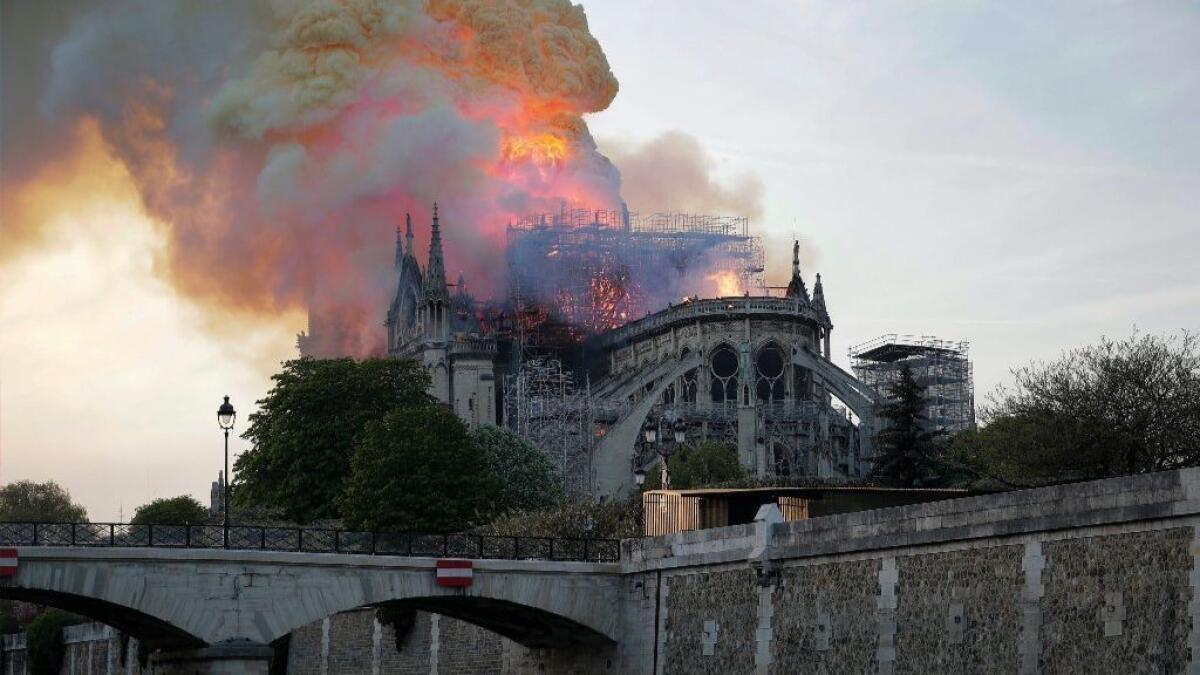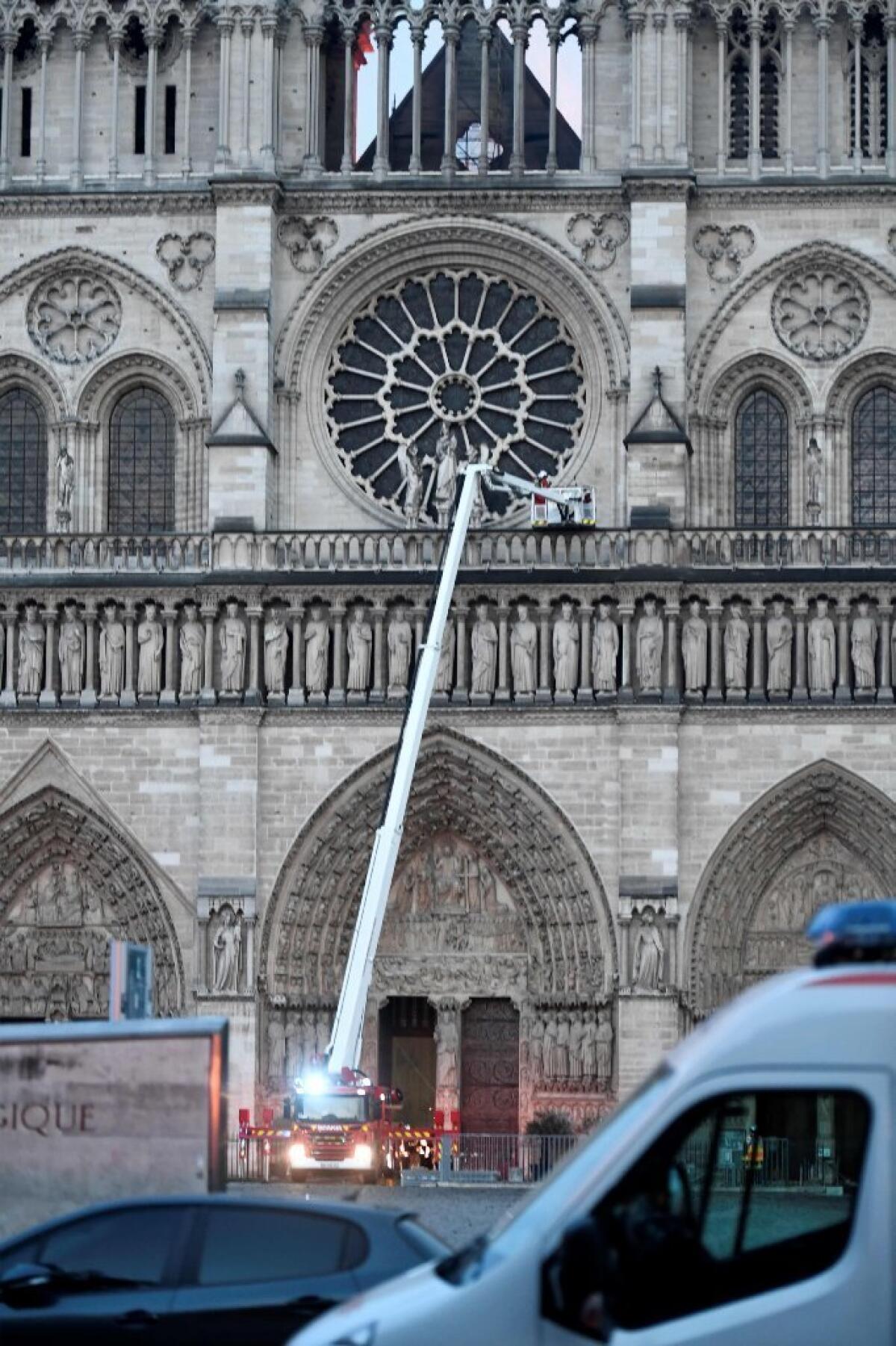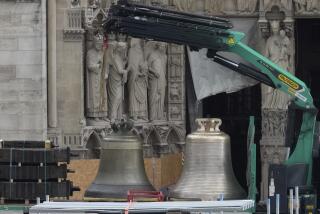An art critic mourns the cultural tragedy of Notre Dame

In October 1793, anti-royalist citizens of Paris stormed the cathedral of Notre Dame, grabbing ropes and pulling down stone sculptures from the monumental façade.
The mob mistook the royally garbed biblical kings of Judah for ancestors of the French monarchy, and they had had enough. The Catholic church held the power to tax, and the lavish royal court had drained the treasury, bankrupting the nation. A long-gathering fury suddenly focused on the corrupt union of church and state.
The guillotine was working overtime, severing the heads of Charlotte Corday, murderer of the revolutionary journalist and politician Jean-Paul Marat in his bath, so touchingly recorded in a painting by Jacques-Louis David, as well as the often bewildered, Austrian-born queen, Marie-Antoinette. The Reign of Terror underway, the mob dragged the heavy stone statues of ancient kings, half a millennium old, out into the cathedral square and summarily chopped off their heads.
Early Monday evening, when the cathedral, shrouded in scaffolding for restoration work, burned in the greatest cultural tragedy since the intentional ruin of Palmyra’s Old City at the hands of ISIS, those events flooded to mind. The cause of the ruinous inferno is still being diagnosed — errant repairs on the wooden roof are an early guess — and the losses, collectively incalculable, will take time to catalogue individually.
Some reports indicate that certain works of art had been removed prior to the fire, although which ones is unclear. The interior has apparently been gutted. That means the potential loss of 14th century carved reliefs by Pierre de Chelle, Jean Ravy and Jean Le Bouteiller and 17th century paintings by Antoine Nicolas and Jean Jouvenet, among other treasures.
The greatest single elements of the celebrated church, the most famous in France and among the most famous in the world, are the massive rose windows, such as the one on the West façade. A great wheel of light, 33 feet in diameter, it embodies the early Gothic transformation of important churches from bulky, Romanesque fortresses erected against a brutish outside world into luminous, resplendent temples that anchored a newly urbanizing Europe.

France was Europe’s most populous nation when work on the structure began in 1163, and Paris was its most crowded city. Just outside of town, about eight miles away in what is today a suburb, a smart and ambitious cleric had set about the epic task of forging an alliance — both practical and spiritual — between the church and the monarchy.
Abbot Suger would represent the new union in stone and glass. He brushed aside the old way of building for the radically innovative design of the royal Abbey of St.-Denis — shrine of the Apostle of France, memorial to Charlemagne and burial place of his father, Pepin, first of the Carolingians to become king. Light, filtered through dazzling colored glass and pouring into interior spaces, and lightness, made possible by interior ribbed vaults and exterior buttresses that allow for less bulky masonry walls, functioned as material manifestations of symbolic principles.
Suger called it a Dionysian theology, based on the writings of a 5th century writer enamored of a Greek theologian then thought to have been a disciple of St. Paul. The Abbey would encompass a mystical revelation of the spirit of God embedded within a precinct of ancient French monarchy.
Within a generation, the relatively modest design was on its way to becoming the template for the great Gothic churches of France — for Chartres, Rouen, Reims, Amiens and more. Among them, the nearby Notre Dame de Paris was special. Architecturally not the most profoundly beautiful nor commanding, it was nonetheless destined to be the greater symbol. The church and its resplendent window resided on a small island in the river flowing through the burgeoning city’s heart.
Five things to know about Notre Dame Cathedral »
Everyone will have a story of the first time they saw it. Mine happened in January 1972, newly arrived with a small group of students to study 18th and 19th century French art history in an independent program set up between Cité Internationale Universitaire and the Ecole du Louvre. Jet lagged yet excited, we would not be able to simply rest for the night at a local hostel. There was only one thing to do. A group of us went straight to Notre Dame and stayed to watch the sunrise.
It’s a small thing, but a big thing too. Monuments are like that.
When revolutionaries scarred the building in 1793, the gash simply added to the prominence. The church was rechristened the Temple of Reason, a name that could not last (and didn’t). Almost 200 years later, in the spring of 1977, the severed heads of more than a score of the fallen stone sculptures, together with hundreds of fragments from another three dozen statues, were discovered buried inside a garden wall of a mansion not far from the opera. The rubble of Notre Dame had been sold off to contractors as building material.
Eventually, replicas of the kings of Judah were carved and put back in the originals’ place, and later the rediscovered heads were installed in the Cluny Museum. What will become of the rubble of Notre Dame now is impossible to say. This time, there is just too much of it.
More to Read
The biggest entertainment stories
Get our big stories about Hollywood, film, television, music, arts, culture and more right in your inbox as soon as they publish.
You may occasionally receive promotional content from the Los Angeles Times.











